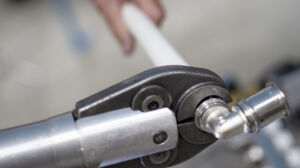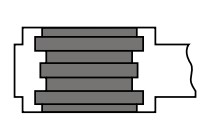Underfloor Heating Patterns
The Three Main Types of Underfloor Heating Patterns
Did you know that how you lay your underfloor heating system can massively change how the system will feel once it’s all commissioned?
There are three main types of UFH laying patterns: bifilar, meander and double meander.
This week’s #TechTuesday sets out some easy-to-follow references for these three types, including when and where you should use them.
Underfloor Heating Pattern 1 – The Bifilar Pattern
This key pattern is probably the least understood pattern but offers some great benefits and is the Multipipe preferred option. You will have to give greater thought as to how you’re going to install the pipe before you lay it, however, once you get your head around how to lay this system, you’ll find it is a useful pattern. Even with very close centres, it’s much easier to lay as turns are only done as half turns and not full turns.
The bifilar pattern has the added benefit of spreading the heat evenly over the floor as it mixes the hot flow pipe with the cooler return pipe.
Underfloor Heating Pattern 2 – The Meander Pattern
This is probably the most common pattern in the underfloor heating market as it’s the easiest to understand and design. This type of pattern works by going up and down the room.
You would typically use your warmest pipe (Flow pipe) to cover the highest heat loss (usually a large glazed window). You will also find these patterns prevalent in most overlay boards, and timber suspended systems because this is the only way in which you can lay the pipe. However, on screeded systems, always insist that your chosen manufacturer implements the bifilar patterns where possible.
Underfloor Heating Pattern 3 – The Double Meander Pattern
We’re including the Double Meander Pattern just in case you come across the term and wonder what it’s about! This is a hybrid between the two patterns mentioned above and is ideal for timber suspended systems where you cannot do bifilar (and so need to use the Meander Pattern) but want the spread of heat like the Bifilar. However, this pattern is quite complicated to lay and requires a lot more physical labour than the options above without providing any additional benefits, so we recommend avoiding it if you can.
Remember, that we have a fully qualified design team, and a technical line should you wish to discuss this further and make sure that on your next project you get the most out of your install. We also have plenty of helpful videos on our YouTube channel if you want to learn more.
Email Us
Call Us




















